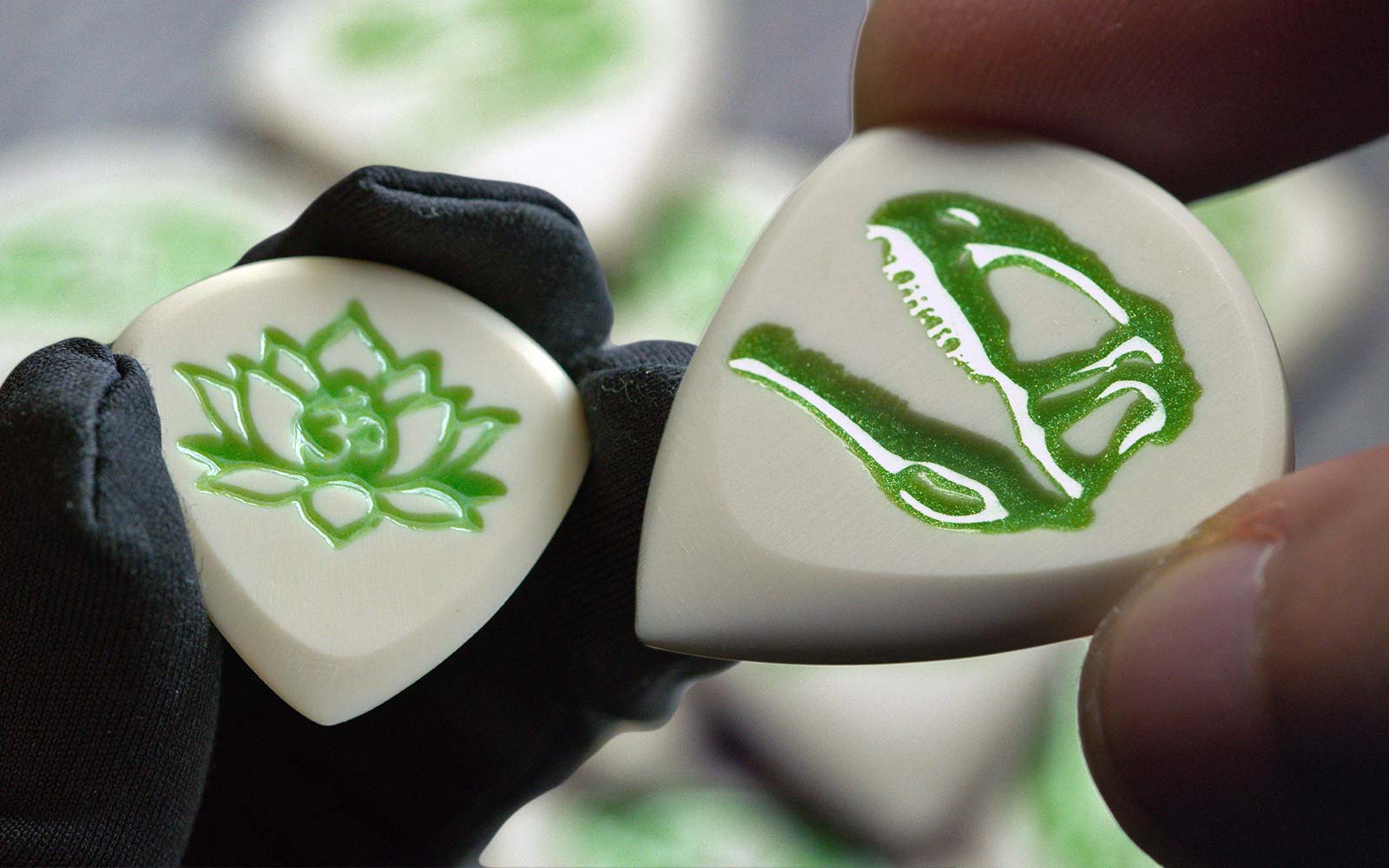Mastering The Hardest Guitar Techniques
by Alex Rodea June 14, 2024
Playing the guitar is an art form that requires not only musicality but also technical prowess. While mastering the basics is essential, it is the ability to conquer challenging guitar techniques that truly sets a guitarist apart from the rest. These techniques, often characterized by intricate patterns and complex finger movements, push the boundaries of what can be achieved on the instrument.
They demand precision, speed, and a deep understanding of various playing styles. In this article, we will delve into why mastering challenging guitar techniques is of utmost importance for any serious guitarist and explore how these techniques can elevate one's skill level to new heights.

Importance of Overcoming Challenges
Mastering challenging guitar techniques goes beyond simply showcasing technical prowess; it serves as a testament to a guitarist's dedication and commitment to their craft.
It's through these demanding techniques that musicians can unleash their creativity and express themselves in ways unimaginable with basic skills alone.
By investing time and effort into learning these intricate maneuvers, a guitarist like yourself can gain access to an expanded musical vocabulary that allows you to paint vivid sonic landscapes, experiment with unique melodies, and captivate audiences with virtuosic performance.
How Challenging Techniques Can Elevate Skill Level
Challenging guitar techniques are not merely fancy tricks or show-off moves; they actively enhance your overall skill level and musicianship.
The mastery of these techniques requires precise control over finger dexterity, coordination between both hands, and heightened awareness of timing and rhythm.
As you navigate through complex patterns such as alternate picking or sweeping arpeggios, you start to develop muscle memory that enables faster execution without sacrificing accuracy or clarity.
Moreover, tackling challenging techniques pushes you out of your comfort zone and encourages exploration of new musical territories - broadening your horizons by incorporating fresh elements into your playing style.
Mastering Challenging Guitar Techniques Requires Dedication, Practice, and a Deep Understanding of Various Playing Styles
To truly conquer challenging guitar techniques, you must embody the three pillars of success: dedication, practice, and a deep understanding of various playing styles.
Dedication forms the foundation for progress; it fuels the motivation to push through difficulties and persist in honing one's skills.
Diligent practice is crucial as it allows for muscle memory development and ensures a solid grasp of the techniques at hand.
A deep understanding of various playing styles provides context and versatility; it allows us to adapt these challenging techniques to different genres while maintaining authenticity within each style.
By seamlessly integrating these three elements into their journey towards mastery, a guitar player can unlock new frontiers of musical expression and make their mark on the world stage.
Overview of Challenging Guitar Techniques
The foundation of pushing the boundaries on the guitar is the use of difficult guitar techniques. To master, these techniques necessitate precision, dexterity, and often a significant amount of practice. Each technique, from lightning-fast alternate picking to the ethereal sounds of tapping, adds a distinct flavor to a guitarist's repertoire.
Here's an overview of some of these techniques:
Alternate Picking:
Alternate picking involves playing successive notes by alternating between downstrokes and upstrokes with the picking hand. This technique is essential for achieving speed and accuracy in solos and intricate passages. Famous guitarists like Paul Gilbert and Yngwie Malmsteen are known for their incredible alternate picking prowess.
Sweep Picking:
Sweep picking is characterized by playing a series of consecutive notes on adjacent strings with a sweeping motion of the pick. It creates a fluid, cascading sound and is commonly used in arpeggios. Guitarists like Frank Gambale and Jason Becker are celebrated for their mastery of sweep picking.
Tapping:
Tapping involves using the fingers of the picking hand to "tap" onto the fretboard, producing notes. This technique can create rapid and complex patterns, adding a distinct sound to solos. Eddie Van Halen is a legendary guitarist who popularized tapping and took it to new heights.
Hybrid Picking:
Hybrid picking involves using a combination of pick and fingers to pluck the strings. This technique offers versatility, allowing for intricate melodic lines and smooth transitions between picked and finger-plucked notes. Brent Mason and Eric Johnson are notable guitarists who excel in hybrid picking.
Legato Playing:
Legato is a technique where notes are played smoothly and connected, primarily using hammer-ons and pull-offs. This technique emphasizes fluidity and can create fast, flowing lines. Joe Satriani and Steve Vai are renowned for their expressive legato playing styles.
To master these difficult guitar techniques, you'll need a lot of practice, a growth mindset, and a lot of patience.
Remember that while these techniques may appear intimidating at first, with consistent effort and dedication, you can unlock new dimensions of creativity & virtuosity in your playing. Your journey toward proficiency, like that of the famous guitarists who have mastered these techniques, can be both rewarding and inspiring!
Related: How to teach yourself to play guitar
Challenging Guitar Techniques
Alternate Picking
Alternate picking is a fundamental guitar technique that enhances speed, precision, and rhythmic accuracy. By systematically alternating between downstrokes and upstrokes with the picking hand, players can achieve seamless note articulation and navigate intricate passages with clarity.
One challenging aspect of alternate picking is maintaining consistent timing and control, especially at higher speeds. The synchronicity between both hands must be finely tuned to avoid unintended accents or disruptions in the rhythm.
To improve alternate picking, focus on starting slowly and gradually increasing the tempo as you gain control and accuracy. Employ metronome practice to develop a strong internal sense of timing.
Also, breaking down complex passages into smaller segments and practicing them meticulously can help in mastering the technique. Over time, as your muscle memory develops, alternate picking will become an invaluable tool in your guitar-playing toolkit, enabling you to execute fast and intricate patterns with finesse.
Finger Tapping
Finger tapping is a captivating guitar technique that involves using the fingers of the fretting hand to create notes by tapping on the fretboard.
Popularized by guitar virtuoso Eddie Van Halen, finger tapping produces rapid and fluid melodies that can add a distinct layer of excitement to solos and improvisations.
Renowned guitarists such as Steve Vai and Stanley Jordan have also pushed the boundaries of finger tapping, showcasing its potential for intricate harmonies and dazzling displays of speed.
One of the challenges of finger tapping is achieving consistent volume and articulation across tapped and non-tapped notes. Ensuring that tapped notes are heard as clearly and distinctly as the rest of the notes requires finesse and control.
To level up your finger tapping technique, start by practicing basic tapping exercises on a single string, gradually incorporating more strings and complex patterns as you become comfortable.
Focus on muting the strings you're not playing to prevent unwanted noise. Additionally, work on synchronizing the movements of both hands to achieve even timing and smooth transitions between tapped and regular notes. With persistent practice, you can unlock the full potential of finger tapping and add a mesmerizing dimension to your guitar playing.
Sweep Picking
Sweep picking is an advanced technique employed to master arpeggios while creating seamless transitions between notes on different strings.
Unlike alternate picking, which focuses on individual note articulation, sweep picking emphasizes smooth movement across multiple strings using one continuous motion—a sweeping motion—of either an upstroke or downstroke with the pick.
To execute sweep-picked arpeggios effectively, proper hand positioning is crucial. The guitarist's hand should lightly touch all strings except for the one being targeted during each particular arpeggio shape.
This technique allows for clean and distinct notes to ring out without any unwanted string noise. It is also essential to maintain a relaxed yet firm grip on the pick, with the wrist angled slightly towards the guitar's body, facilitating smooth and efficient pick movement.
However, beginners often face common challenges when first learning sweep picking. One such challenge is maintaining consistent pick direction during the sweep motion, ensuring that each note of the arpeggio is executed clearly and evenly.
Additionally, synchronizing the movement of both hands can be tricky, as it requires precise timing and coordination. These hurdles can be overcome through diligent practice, starting with slow and deliberate exercises before gradually increasing speed.
By mastering sweep picking, guitarists gain a profound sense of fluidity in their playing. This technique enables them to effortlessly connect chords or arpeggios while adding a touch of elegance to their music.
Hybrid Picking
Hybrid picking is a versatile guitar technique that combines the use of a guitar pick with the fingers of the picking hand.
By using this hybrid approach, guitarists can achieve a dynamic range of tones and execute complex melodic lines with remarkable fluidity.
Renowned guitarists like Eric Johnson and Brent Mason have mastered hybrid picking, seamlessly blending picked notes with finger-plucked notes to create captivating solos and intricate arrangements.
One of the challenging aspects of hybrid picking is achieving balance and coordination between the pick and the fingers. This requires precise control over both elements to maintain consistent dynamics and avoid unintentional string muting or volume fluctuations.
To improve your hybrid picking technique, start by practicing simple exercises that incorporate alternating pick strokes and finger plucks.
Gradually introduce more complex patterns, focusing on maintaining a smooth transition between the pick and finger-plucked notes.
Experiment with different finger combinations to find what feels most comfortable and efficient for your playing style.
Over time, your hybrid picking skills will enhance your overall expressiveness and allow you to seamlessly switch between picking techniques, enriching your guitar playing repertoire.
Legato Playing
Legato is a captivating guitar technique that emphasizes smooth and connected notes, achieved primarily through the use of hammer-ons and pull-offs.
This technique creates a flowing and seamless sound that enhances melodic expression and allows guitarists to execute rapid and intricate passages with a distinct fluidity.
Renowned guitarists like Joe Satriani, Allan Holdsworth, & Greg Howe have mastered legato, showcasing its capacity for creating expressive solos and captivating melodies that stand out for their effortless grace.
What makes legato playing difficult is maintaining evenness in volume and clarity between hammered-on and pulled-off notes. Achieving this balance requires consistent finger strength and coordination, as well as careful attention to muting unwanted string noise.
If you want to improve your legato technique, start by isolating small groups of notes and practicing hammer-ons and pull-offs with precision. Gradually build up speed while maintaining control over each note's articulation.
Focus on minimizing finger movement and using just enough force to produce a clear sound. As you practice, pay close attention to your hand positions and finger angles, ensuring that your fingers are landing cleanly on the strings. With dedication to these details, you can refine your legato technique and add a captivating layer of expressiveness to your guitar playing.
Conclusion
Mastering challenging guitar techniques is a journey that requires dedication, practice, and an unwavering passion for this art form.
By exploring each individual technique such as tapping technique, hybrid picking, and legato playing in great detail, you can quickly expand your repertoire of skills and elevate your overall playing ability to new heights.
While these techniques may seem daunting at first glance, with perseverance and a commitment to consistent practice, you too can unlock boundless creativity & performance on the instrument.
Embrace the challenges presented by these advanced techniques as stepping stones toward personal growth and artistic expression on the guitar. Remember that every guitarist starts somewhere; mastery is not achieved overnight but through consistent progress fueled by passion.
Also in Iron Age || General Blog

The 3 Best Engraved Guitar Picks to Personalize Your Playing Experience
by Alex Rodea March 20, 2025
Engraved guitar picks add both style and function, offering extra grip and a personal touch with custom initials, logos, or messages. Whether you're looking for a unique gift or a pick that stands out, check out our top choices and grab your first engraving for free with code...

Guitar Jack Not Working? Here's A Few Easy Steps To Fix Crackles & Pops
by Alex Rodea March 19, 2025

Mono vs Stereo Jacks: Key Differences & How to Wire Them
by Alex Rodea March 06, 2025

The Best Acoustic Guitar Picks: Tips & Considerations For Newbies
by Alex Rodea March 06, 2025

The Best Guitar Picks For Bass: A Guide To Help You Choose
by Alex Rodea March 05, 2025

What is a Fret Wrap, String Muter, or String Dampener?
by Alex Rodea March 05, 2025
+Iron Age Blogs
For the latest news & announcements, check out our News & Updates Blog
For tips, tricks, & other informative articles, check out our General Guitar Blog
Become a newsletter subscriber to get the latest info on new blog articles, receive exclusive promo codes, and be notified of upcoming giveaways!
+Recent Articles
-
The 3 Best Engraved Guitar Picks to Personalize Your Playing Experience
March 20, 2025
-
Guitar Jack Not Working? Here's A Few Easy Steps To Fix Crackles & Pops
March 19, 2025
-
Mono vs Stereo Jacks: Key Differences & How to Wire Them
March 06, 2025
-
The Best Acoustic Guitar Picks: Tips & Considerations For Newbies
March 06, 2025
-
The Best Guitar Picks For Bass: A Guide To Help You Choose
March 05, 2025
-
What is a Fret Wrap, String Muter, or String Dampener?
March 05, 2025
-
Guitar String Names & How To Memorize Them
March 05, 2025
-
How To Make Wooden Guitar Picks: Ebony Spearhead
March 05, 2025
-
Top 3 Best Guitar Picks For Grip: Iron Age Edition
March 05, 2025
-
Are Guitar Picks Necessary? Exploring the Pros, Cons, and Playing Styles
March 05, 2025
+Affiliate Notice
Iron Age is a participant in the Amazon Services LLC Associates Program, an affiliate advertising program designed to provide a way for websites to earn advertising revenues by advertising and linking to Amazon.com
Iron Age Guitar Accessories
226 Douglas Way St
San Antonio, TX 78210
USA
⚔️
“Quality is never an accident. It is always the result of high intention, sincere effort, intelligent direction and skillful execution. It represents the wise choice of many alternatives.”
~William A. Foster (MOH Recipient, 1945)
Sign up for the Iron Age newsletter to Save 15% on your 1st order, plus get exclusive offers, product updates, and early access to giveaways!
© 2025 Iron Age Guitar Accessories.
Est 2015.


Alex Rodea
Author
Founder of Iron Age, my guitar journey began in 2006, fueling a passion for crafting premium guitar accessories that embody timeless style & innovative expression. Through my Stay Tuned Guitar site I also share tips & info for new guitarists, offering everything from beginner tutorials to DIY tips & general music knowledge.